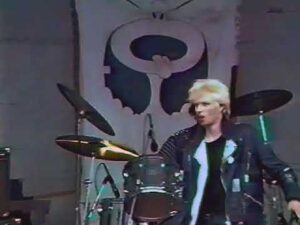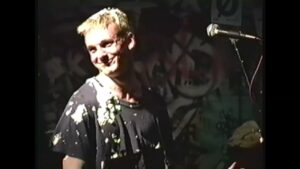Formation & Members
Kaaos, known in their native Japan as キッシング・ザ・カルタゴ, emerged from the vibrant punk scene of Tokyo in the early 1980s. The band was founded in 1981, a time when the city was a hotbed for countercultural movements and musical experimentation. The original lineup consisted of Tetsuya “Tetsu” Nishimura on vocals, Hiroshi Tanaka on guitar, Atsuko Yamamoto on bass, and Kenji “Kenny” Fujimoto on drums. These four individuals, drawn together by a shared passion for anarchic sounds and raw energy, quickly made a name for themselves with their rapid-fire performances and uncompromising attitude.
As the band evolved, several lineup changes occurred, with Tetsu remaining the constant driving force. Notably, the addition of Yuki Sato on guitar in 1985 brought a fresh dynamic to their sound, contributing to some of their most influential works. Despite these changes, the core ethos of Kaaos remained intact, centered around a relentless drive to challenge musical norms and societal conventions.
Musical Style & Characteristics
Kaaos is often celebrated for their distinctive blend of punk and hardcore elements, characterized by fast tempos, abrasive guitar riffs, and a raw, unfiltered vocal delivery. Their music is defined by its intensity, often featuring short, explosive tracks that rarely exceed the three-minute mark. The lyrics, primarily penned by Tetsu, range from deeply personal to overtly political, reflecting the band’s commitment to addressing issues such as social injustice, governmental corruption, and existential angst.
Incorporating influences from both Western and Japanese punk scenes, Kaaos developed a sound that was uniquely their own. Their use of dissonant chords, frenetic drumming, and impassioned vocal performances set them apart from their contemporaries, making them a seminal force in the Japanese punk landscape.
Key Works & Discography
Kaaos released their debut album, “Riot City,” in 1983, which quickly became a cult favorite among punk enthusiasts. The album’s raw production and ferocious energy captured the essence of their live performances, cementing their reputation as one of Japan’s most formidable punk acts.
Subsequent releases such as “Chaos Reigns” (1986) and “No Future” (1989) further solidified their status. “Chaos Reigns” showcased the band’s evolution in sound, incorporating more complex song structures and lyrical depth, while “No Future” was a critical reflection on the political climate of the time, resonating with audiences both in Japan and abroad.
In addition to their studio albums, Kaaos also released several influential EPs and singles, including “Anarchy in Tokyo” (1984) and “Broken Dreams” (1988), which remain fan favorites to this day.
Influence on Other Bands/Scenes
Kaaos’s impact on the punk and hardcore scenes extends far beyond their immediate surroundings. Their music inspired a new generation of Japanese punk bands, many of whom cite Kaaos as a primary influence. The band’s fearless approach to lyrical content and musical experimentation encouraged other artists to push boundaries and explore new creative avenues.
Internationally, Kaaos gained recognition within underground circles, influencing bands in Europe and North America. Their ability to blend cultural elements of both East and West resonated with musicians seeking to break free from conventional genres, leading to a cross-pollination of ideas that enriched the global punk community.
Breakups or Reunions
Despite their success, Kaaos faced several internal challenges that led to multiple breakups over the years. The first significant hiatus occurred in 1990, following the release of “No Future,” as tensions within the band reached a boiling point. After a five-year break, the band reunited in 1995, rejuvenated and ready to take on new challenges.
This reunion was short-lived, however, as personal differences once again led to their disbandment in 1999. Fans were delighted when Kaaos announced another reunion in 2008, which saw them touring extensively and releasing a new album, “Rebirth of Chaos,” in 2010. This time, the reunion proved more sustainable, with the band continuing to perform and record sporadically.
Current Reputation & Legacy
Today, Kaaos is revered as one of the pioneering forces in the Japanese punk and hardcore scenes. Their influence is acknowledged by both fans and fellow musicians, who continue to draw inspiration from their fearless approach to music and activism. The band’s legacy is preserved through numerous reissues of their early works, as well as tribute albums featuring covers by contemporary punk artists.
Kaaos is also credited with helping to bridge cultural divides within the punk community, encouraging cross-cultural collaborations and fostering a global network of like-minded musicians and fans. Their music remains relevant, with new generations discovering the raw power and authenticity that defined their sound.
Conclusion
Kaaos’s journey from the underground clubs of Tokyo to international acclaim is a testament to their enduring appeal and artistic integrity. Through their music, they have consistently challenged the status quo, offering a voice to the voiceless and inspiring countless others to do the same. As they continue to perform and release new material, Kaaos remains a vital and influential force in the world of punk and hardcore, embodying the spirit of rebellion and resilience that defines the genre.









